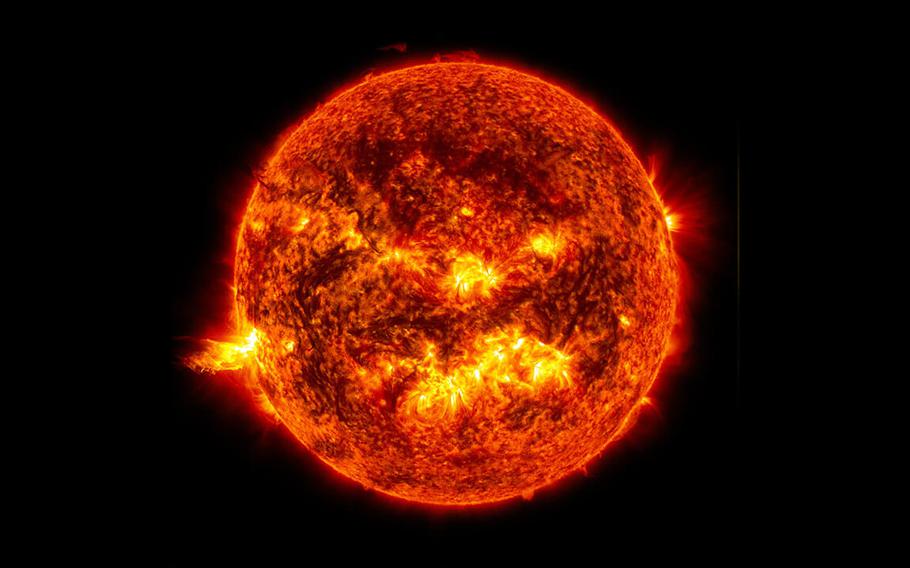Last year was the fifth hottest ever recorded on the planet, the European Union’s Copernicus Climate Change Service announced Tuesday. It was part of an unabated broader warming trend as humans continue to pump massive amounts of greenhouse gases into the atmosphere.
Extreme heat waves in Europe, Asia and the United States — which stemmed in part from more than a century of burning fossil fuels — helped drive 2022’s unusual warmth, researchers found.
Europe sweltered through its hottest summer on record and its second-hottest year overall, researchers said. Pakistan experienced catastrophic flooding as a result of extreme rainfall. In February, Antarctic Sea ice reached its lowest minimum amount in 44 years of satellite records.
The year “2022 was yet another . . . of climate extremes across Europe and globally. These events highlight that we are already experiencing the devastating consequences of our warming world,” Samantha Burgess, deputy director of Copernicus, said in a statement announcing the annual findings.
She said data from 2022 provides “clear evidence that avoiding the worst consequences will require society to both urgently reduce carbon emissions and swiftly adapt to a changing climate.”
The records show that the last eight years have been the hottest recorded in human history.
Despite the urgency to halt such warming, the world’s output of carbon dioxide and other planet-warming emissions continues to rise. U.S. greenhouse gas emissions ticked up by 1.3 percent in 2022 over the previous year, according to an analysis released Tuesday by the Rhodium Group, an independent research firm.
President Biden has pledged to cut U.S. emissions 50 percent to 52 percent by the end of the decade compared with 2005 levels, and while Congress recently passed far-reaching legislation to fund a shift toward cleaner energy, the nation is not yet on a trajectory to meet those lofty goals.
Neither is the world.
A U.N. report last fall found that despite high-profile promises to boost climate targets, nations have shaved just 1 percent off their projected greenhouse gas emissions for 2030. Scientists have said the world needs to cut planet-warming emissions roughly in half by the end of the decade to be on track to meet its most ambitious promises.
The U.N. report found that the ongoing “emissions gap” — the gulf between national plans to reduce carbon pollution and the actual cuts needed to avert catastrophic warming — currently leaves the Earth on a path to warm by a dangerous 2.4 degrees Celsius (4.3 degrees Fahrenheit) by the end of the century. And few nations have implemented the policies necessary to meet even these inadequate targets, the report said.
“Global and national climate commitments are falling pitifully short,” U.N. Secretary General António Guterres said at the time. “We must close the emissions gap before climate catastrophe closes in on us all.”
Tuesday’s report from European researchers documents how humans are continuing to heat the planet.
Researchers found that atmospheric concentrations of carbon dioxide are at the highest levels in more than 2 million years. Levels of methane, a short-lived but powerful greenhouse gas, have also continued to increase and are at the highest levels in 800,000 years, according to Copernicus.
“Greenhouse gases, including carbon dioxide and methane, are the main drivers of climate change, and we can see from our monitoring activities that atmospheric concentrations are continuing to rise with no signs of slowing,” Vincent-Henri Peuch, director of the Copernicus Atmosphere Monitoring Service, said in Tuesday’s announcement.
That continued warming has led to an increase in suffering around the globe.
Scientists have detailed how a warmer atmosphere is supercharging storms, intensifying droughts and leaving places less time to prepare before the next weather-related disaster strikes.
European researchers on Tuesday noted that polar regions experienced episodes of record temperatures during 2022. That includes places like Greenland, where in September virtually all of the country experienced higher temperatures than in any year since at least 1979.
They noted how Pakistan and northern India endured prolonged spring heat waves, and how central and eastern China faced long-lasting heat wave conditions and subsequent drought in the summer.
There was the biblical flooding that displaced millions in Pakistan, along with torrential rains that led to deadly and costly floods from Australia to South Africa to the United States.
And all indications are that as long as human-caused emissions continue to warm the globe, more disasters are likely to follow.
“The frequency and severity of extreme climate disasters continue to increase,” Rick Spinrad, administrator of the National Oceanic and Atmospheric Administration, told reporters Tuesday in recounting the U.S. weather-related disasters over the past year.
“We must adapt and become resilient to climate threats we cannot avoid.”

The Sun. (NASA)